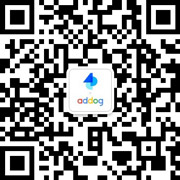本案例默认翻译为中文,点击可切换回原语言
已切换成原语言,点击可翻译成中文
伪装的听力测试
案例简介:概要 澳大利亚的局势正处于无声的流行病之中。350万的人患有听力损失,然而 85% 的人对此无能为力。作为植入式听力解决方案的全球领导者,耳蜗最大的竞争对手不是竞争品牌 -- 而是潜在客户的不作为。患者每天都在用怀疑、无知和退缩与情感影响作斗争。他们多年来没有得到治疗,把自己与社会环境隔离开来,导致与他人断绝关系。简介正是在这种背景下,耳蜗发起了他们的第一个主要消费者活动,旨在让听力受损的人采取行动。目标 1。在 12 个月内,吸引 1,500 名合格的线索进入耳蜗销售漏斗。2。让人们参与耳蜗品牌,并通过活动网站将它们视为听力支持的来源。 战略 直接面向消费者的耳蜗传统上专注于直接与听力专业人士沟通。然而,由于转诊率低,做出了直接与消费者沟通的大胆战略决定。低转诊的原因包括: * 缺乏筛查 * 医生不知道候选资格和何时转诊 * 对普通医学中听力植入物的了解很少,通过定性、人种学和社会倾听来扰乱否认, 我们揭示了听证会旅程的 “否认” 阶段。在否认他们的听力有多糟糕,或者干脆把它视为 “变老” 的一部分时,他们继续生活在没有他们曾经认为理所当然的东西的环境中。这种否认是我们竞选背后的驱动力。很明显,我们必须打破否认。考虑到这种行为障碍,我们不能只是告诉人们他们有问题,我们必须证明这一点。我们开发了一种方法来测试他们的听力,而他们却不知道。 相关性 我们的竞选信息是围绕一个爱情故事的叙述而建立的。一个跟踪一对年轻夫妇几十年的关系,通过一部简短有趣的电影进行伪装的听力测试。这部电影是在我们的目标观众欢迎的电影之前向毫无戒心的电影观众放映的。这部电影还被放在一个专门建立的网站上,这样用户就可以与这部电影互动,在不知不觉中接受他们通常会拒绝的听力测试。电影的片段被用作进一步的听力评估,让用户更好地理解他们的听力。 结果 促进诊断和治疗我们测试了 137,000 名澳大利亚人的听力,他们通常不会被测试。导线对耳蜗至关重要。与耳蜗对话的人越多,进行评估过程的人就越多,希望有资格接受手术。我们收到了 2,056 个高价值的合格线索,而目标是 1,500。这意味着 2,056 人正在恢复听力。网站参与 128,883 个独特的访问者,平均 14 分钟的时间在网站上,表现出高参与度。患者结果虽然铅可能需要 6 年才能成熟到植入体,但 13 名候选人在观看了这场运动后已经接受了这种改变生活的手术。更多的人正在接受手术。2017年9月,特伦特 · 齐默曼议员向澳大利亚议会提交了一份以耳蜗为特征的报告。因此,听力健康现在被认为是国家卫生优先事项。 执行 塑造一部有两个结局的电影,与主要的听力学家合作,我们分析了病人的听力图,这些图反映了电影的各个方面。我们将声音、单词和环境纳入听力损失患者难以理解的脚本。表演被编排成消极的解释,唇读的能力被剥夺,这使得听力受损的人很难跟随。到达我们的观众,当他们最不期望的时候,我们需要进行听力测试,而观众不知道。这部短片是在电影和电影节上向毫无戒心的观众播出的,之前是受老年人欢迎的电影。这些都是公正的环境,当我们的观众的警惕很低时,我们可以进行真正的伪装测试。预告内容是通过社交、 Outbrain 和数字显示来播种的,目的是在不知道这是听力测试的情况下,开车送人们去微型网站观看电影。 活动描述 基于听力损失的人否认、忽视或不知道他们的听力有多差的洞察力,我们开发了一种在他们不知道的情况下测试他们听力的方法。“爱情会永远持续下去吗?” 是一部短片,根据观众的听觉能力,有两个不同的结局。这是一个伪装的听力测试。这部电影讲述了一对夫妇四十多年的关系,并提出了一个问题 “爱情是持久的吗?”。对于那些听得好的人来说,他们的关系仍然是充满爱的。但是这部电影是照本宣科制作的在这种情况下,听力有问题的人会认为这种关系会恶化。 BriefWithProjectedOutcomes 耳蜗产品注册为医疗器械。耳蜗由治疗药品管理局管理。医疗设备可以直接向消费者推广。 简要解释 观众 澳大利亚正处于无声的流行病之中。350万人患有听力损失,但 85% 人没有得到治疗。从业人员对人工耳蜗植入的建议很低。出于这个原因,耳蜗第一次决定直接与消费者沟通。
伪装的听力测试
案例简介:Synopsis THE SITUATION Australia is in the midst of a silent epidemic. 3.5 million people are living with hearing loss, however 85% do nothing about it. As the global leader in implantable hearing solutions, Cochlear's biggest competitor is not a rival brand - it is the inaction of their potential customers. Sufferers battle with the emotional impact day-to-day with disbelief, ignorance and withdrawal. They go untreated for years, isolating themselves from social situations, resulting in a disconnection with others. BRIEF It is against this backdrop that Cochlear launched their first major consumer campaign, aiming to get people with hearing loss to take action. OBJECTIVES 1. Attract 1,500 qualified leads into the Cochlear sales funnel, over 12 months. 2. Get people to engage with the Cochlear brand and consider them as a source for hearing support via the campaign website. Strategy DIRECT-TO-CONSUMERS Cochlear had traditionally focused efforts on communicating directly to hearing professionals. However, with low referral rates, a bold strategic decision was made to communicate directly to consumers. Reasons for low referrals included: * Lack of screening * Physicians not knowing candidacy and when to refer * Little understanding regarding hearing implants within general medicine DISRUPTING THE DENIAL Through qualitative, ethnography, and social listening, we revealed the 'denial' stage of the hearing journey. In denial about just how bad their hearing is, or simply dismissing it as a part of 'growing old', they continue to live without what they once took for granted. This denial was the driving insight behind our campaign. It was clear we had to disrupt the denial. Considering this behavioural barrier, we couldn't just tell people they had a problem, we had to demonstrate it. We developed a way to test their hearing, without them knowing. Relevancy Our campaign message was built around the narrative of a love story. One which followed a young couple's relationship through the decades to deliver a disguised hearing test through the medium of a short, entertaining film. The film was screened to unsuspecting cinema audiences before films popular with our target audience. The film was also housed online on a purpose-built website so users could interact with the film, unknowingly undergoing a hearing test they would normally reject. Segments of the film were then utilised as a further hearing assessment for users to better understand their hearing. Outcome FACILITATED DIAGNOSIS AND TREATMENT We tested the hearing of 137,000 Australians, who ordinarily wouldn't have been tested. Leads are critical to Cochlear. The more people who have a conversation with Cochlear, the more people who undertake the assessment process, hopefully becoming eligible for surgery. We received 2,056 high-value, qualified leads, against a target of 1,500. Meaning 2,056 people are on the path to restoring their hearing. WEBSITE ENGAGEMENT 128,883 unique visitors, with 14 minutes average time on site, demonstrating high engagement. PATIENT OUTCOMES While a lead can take 6 years to mature to an implant, 13 candidates have already received this life-changing surgery after seeing the campaign. Many more are in the pipeline to receive surgery. NATIONAL HEALTH AGENDA In September 2017, Trent Zimmerman MP presented a report featuring Cochlear to the Australian Parliament. As a result, hearing health is now being considered to become a National Health Priority. Execution SHAPING A FILM WITH TWO ENDINGS Working with leading audiologists we analysed patient audiograms, which informed all aspects of the film. We incorporated sounds, words and environments into the script which people with hearing loss have difficulty with. Performances were choreographed to be interpreted negatively and the ability to lip-read was taken away, making it hard to follow for people with hearing loss. REACHING OUR AUDIENCE, WHEN THEY LEAST EXPECT IT We needed to deliver a hearing test, without the audience knowing. The short film was aired to unsuspecting audiences in cinema and film festivals before films popular with the older demographic. These were unbiased environments where we could deliver a true disguised test when our audience's guard was low. Teaser content was seeded via social, Outbrain and digital display, to drive people to the microsite to watch the film, without knowing it was a hearing test. CampaignDescription Based on the insight that people with hearing loss are in denial, ignoring it, or are unaware just how bad their hearing is, we developed a way to test their hearing, without them knowing. 'Does Love Last Forever?' is a short film with two different endings, depending on the viewer's hearing ability. It is a hearing test in disguise. The film follows a couple's relationship over four decades, and poses the question "Did love last?". For those who can hear well, their relationship remains loving. But the film is scripted and produced in such a way that people with a hearing problem perceive the relationship to deteriorate. BriefWithProjectedOutcomes Cochlear products are registered as medical devices. Cochlear is governed by the Therapeutic Goods Administration. Medical devices can be promoted direct-to-consumers. BriefExplanation Audience Australia is in the midst of a silent epidemic. 3.5 million people are living with hearing loss however 85% are not being treated. Recommendation of Cochlear implants from practitioners is low. For this reason, Cochlear made the decision to communicate direct-to-consumers for the first time.
The Hearing Test In Disguise
案例简介:概要 澳大利亚的局势正处于无声的流行病之中。350万的人患有听力损失,然而 85% 的人对此无能为力。作为植入式听力解决方案的全球领导者,耳蜗最大的竞争对手不是竞争品牌 -- 而是潜在客户的不作为。患者每天都在用怀疑、无知和退缩与情感影响作斗争。他们多年来没有得到治疗,把自己与社会环境隔离开来,导致与他人断绝关系。简介正是在这种背景下,耳蜗发起了他们的第一个主要消费者活动,旨在让听力受损的人采取行动。目标 1。在 12 个月内,吸引 1,500 名合格的线索进入耳蜗销售漏斗。2。让人们参与耳蜗品牌,并通过活动网站将它们视为听力支持的来源。 战略 直接面向消费者的耳蜗传统上专注于直接与听力专业人士沟通。然而,由于转诊率低,做出了直接与消费者沟通的大胆战略决定。低转诊的原因包括: * 缺乏筛查 * 医生不知道候选资格和何时转诊 * 对普通医学中听力植入物的了解很少,通过定性、人种学和社会倾听来扰乱否认, 我们揭示了听证会旅程的 “否认” 阶段。在否认他们的听力有多糟糕,或者干脆把它视为 “变老” 的一部分时,他们继续生活在没有他们曾经认为理所当然的东西的环境中。这种否认是我们竞选背后的驱动力。很明显,我们必须打破否认。考虑到这种行为障碍,我们不能只是告诉人们他们有问题,我们必须证明这一点。我们开发了一种方法来测试他们的听力,而他们却不知道。 相关性 我们的竞选信息是围绕一个爱情故事的叙述而建立的。一个跟踪一对年轻夫妇几十年的关系,通过一部简短有趣的电影进行伪装的听力测试。这部电影是在我们的目标观众欢迎的电影之前向毫无戒心的电影观众放映的。这部电影还被放在一个专门建立的网站上,这样用户就可以与这部电影互动,在不知不觉中接受他们通常会拒绝的听力测试。电影的片段被用作进一步的听力评估,让用户更好地理解他们的听力。 结果 促进诊断和治疗我们测试了 137,000 名澳大利亚人的听力,他们通常不会被测试。导线对耳蜗至关重要。与耳蜗对话的人越多,进行评估过程的人就越多,希望有资格接受手术。我们收到了 2,056 个高价值的合格线索,而目标是 1,500。这意味着 2,056 人正在恢复听力。网站参与 128,883 个独特的访问者,平均 14 分钟的时间在网站上,表现出高参与度。患者结果虽然铅可能需要 6 年才能成熟到植入体,但 13 名候选人在观看了这场运动后已经接受了这种改变生活的手术。更多的人正在接受手术。2017年9月,特伦特 · 齐默曼议员向澳大利亚议会提交了一份以耳蜗为特征的报告。因此,听力健康现在被认为是国家卫生优先事项。 执行 塑造一部有两个结局的电影,与主要的听力学家合作,我们分析了病人的听力图,这些图反映了电影的各个方面。我们将声音、单词和环境纳入听力损失患者难以理解的脚本。表演被编排成消极的解释,唇读的能力被剥夺,这使得听力受损的人很难跟随。到达我们的观众,当他们最不期望的时候,我们需要进行听力测试,而观众不知道。这部短片是在电影和电影节上向毫无戒心的观众播出的,之前是受老年人欢迎的电影。这些都是公正的环境,当我们的观众的警惕很低时,我们可以进行真正的伪装测试。预告内容是通过社交、 Outbrain 和数字显示来播种的,目的是在不知道这是听力测试的情况下,开车送人们去微型网站观看电影。 活动描述 基于听力损失的人否认、忽视或不知道他们的听力有多差的洞察力,我们开发了一种在他们不知道的情况下测试他们听力的方法。“爱情会永远持续下去吗?” 是一部短片,根据观众的听觉能力,有两个不同的结局。这是一个伪装的听力测试。这部电影讲述了一对夫妇四十多年的关系,并提出了一个问题 “爱情是持久的吗?”。对于那些听得好的人来说,他们的关系仍然是充满爱的。但是这部电影是照本宣科制作的在这种情况下,听力有问题的人会认为这种关系会恶化。 BriefWithProjectedOutcomes 耳蜗产品注册为医疗器械。耳蜗由治疗药品管理局管理。医疗设备可以直接向消费者推广。 简要解释 观众 澳大利亚正处于无声的流行病之中。350万人患有听力损失,但 85% 人没有得到治疗。从业人员对人工耳蜗植入的建议很低。出于这个原因,耳蜗第一次决定直接与消费者沟通。
The Hearing Test In Disguise
案例简介:Synopsis THE SITUATION Australia is in the midst of a silent epidemic. 3.5 million people are living with hearing loss, however 85% do nothing about it. As the global leader in implantable hearing solutions, Cochlear's biggest competitor is not a rival brand - it is the inaction of their potential customers. Sufferers battle with the emotional impact day-to-day with disbelief, ignorance and withdrawal. They go untreated for years, isolating themselves from social situations, resulting in a disconnection with others. BRIEF It is against this backdrop that Cochlear launched their first major consumer campaign, aiming to get people with hearing loss to take action. OBJECTIVES 1. Attract 1,500 qualified leads into the Cochlear sales funnel, over 12 months. 2. Get people to engage with the Cochlear brand and consider them as a source for hearing support via the campaign website. Strategy DIRECT-TO-CONSUMERS Cochlear had traditionally focused efforts on communicating directly to hearing professionals. However, with low referral rates, a bold strategic decision was made to communicate directly to consumers. Reasons for low referrals included: * Lack of screening * Physicians not knowing candidacy and when to refer * Little understanding regarding hearing implants within general medicine DISRUPTING THE DENIAL Through qualitative, ethnography, and social listening, we revealed the 'denial' stage of the hearing journey. In denial about just how bad their hearing is, or simply dismissing it as a part of 'growing old', they continue to live without what they once took for granted. This denial was the driving insight behind our campaign. It was clear we had to disrupt the denial. Considering this behavioural barrier, we couldn't just tell people they had a problem, we had to demonstrate it. We developed a way to test their hearing, without them knowing. Relevancy Our campaign message was built around the narrative of a love story. One which followed a young couple's relationship through the decades to deliver a disguised hearing test through the medium of a short, entertaining film. The film was screened to unsuspecting cinema audiences before films popular with our target audience. The film was also housed online on a purpose-built website so users could interact with the film, unknowingly undergoing a hearing test they would normally reject. Segments of the film were then utilised as a further hearing assessment for users to better understand their hearing. Outcome FACILITATED DIAGNOSIS AND TREATMENT We tested the hearing of 137,000 Australians, who ordinarily wouldn't have been tested. Leads are critical to Cochlear. The more people who have a conversation with Cochlear, the more people who undertake the assessment process, hopefully becoming eligible for surgery. We received 2,056 high-value, qualified leads, against a target of 1,500. Meaning 2,056 people are on the path to restoring their hearing. WEBSITE ENGAGEMENT 128,883 unique visitors, with 14 minutes average time on site, demonstrating high engagement. PATIENT OUTCOMES While a lead can take 6 years to mature to an implant, 13 candidates have already received this life-changing surgery after seeing the campaign. Many more are in the pipeline to receive surgery. NATIONAL HEALTH AGENDA In September 2017, Trent Zimmerman MP presented a report featuring Cochlear to the Australian Parliament. As a result, hearing health is now being considered to become a National Health Priority. Execution SHAPING A FILM WITH TWO ENDINGS Working with leading audiologists we analysed patient audiograms, which informed all aspects of the film. We incorporated sounds, words and environments into the script which people with hearing loss have difficulty with. Performances were choreographed to be interpreted negatively and the ability to lip-read was taken away, making it hard to follow for people with hearing loss. REACHING OUR AUDIENCE, WHEN THEY LEAST EXPECT IT We needed to deliver a hearing test, without the audience knowing. The short film was aired to unsuspecting audiences in cinema and film festivals before films popular with the older demographic. These were unbiased environments where we could deliver a true disguised test when our audience's guard was low. Teaser content was seeded via social, Outbrain and digital display, to drive people to the microsite to watch the film, without knowing it was a hearing test. CampaignDescription Based on the insight that people with hearing loss are in denial, ignoring it, or are unaware just how bad their hearing is, we developed a way to test their hearing, without them knowing. 'Does Love Last Forever?' is a short film with two different endings, depending on the viewer's hearing ability. It is a hearing test in disguise. The film follows a couple's relationship over four decades, and poses the question "Did love last?". For those who can hear well, their relationship remains loving. But the film is scripted and produced in such a way that people with a hearing problem perceive the relationship to deteriorate. BriefWithProjectedOutcomes Cochlear products are registered as medical devices. Cochlear is governed by the Therapeutic Goods Administration. Medical devices can be promoted direct-to-consumers. BriefExplanation Audience Australia is in the midst of a silent epidemic. 3.5 million people are living with hearing loss however 85% are not being treated. Recommendation of Cochlear implants from practitioners is low. For this reason, Cochlear made the decision to communicate direct-to-consumers for the first time.
伪装的听力测试
暂无简介
The Hearing Test In Disguise
暂无简介
基本信息
- 广告战役: #Cochlear-网络-71824#
- 广告品牌: Cochlear
- 发布日期: 2000
- 行业领域: 生活服务 , 医疗/护理 , 医药
- 媒体类别: 海报/平面
- 广告语言: 英语
- 媒介平台: 网络
- 获得奖项:
暂无评分
已有{{caseInfo.tatolPeople}}人评分
创作者
案例详情
涵盖全球100万精选案例,涉及2800个行业,包含63000个品牌
热门节日97个,23个维度智能搜索
-

项目比稿
品类案例按时间展现,借鉴同品牌策略,比稿提案轻松中标
-

创意策划
任意搜索品牌关键词,脑洞创意策划1秒呈现
-

竞品调研
一键搜索竞品往年广告,一眼掌握对手市场定位
-

行业研究
热词查看洞悉爆点,抢占行业趋势红利
登录后查看全部案例信息
如果您是本案的创作者或参与者 可对信息进行完善







